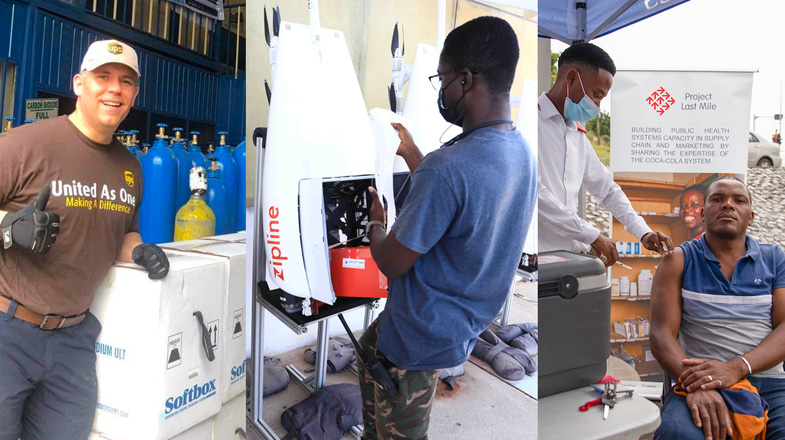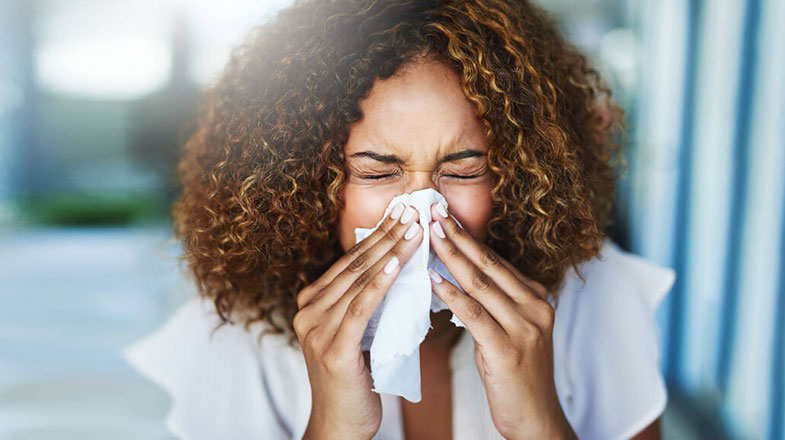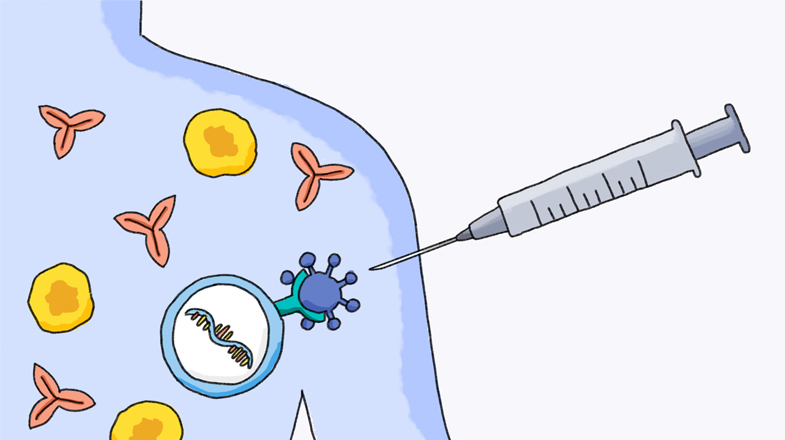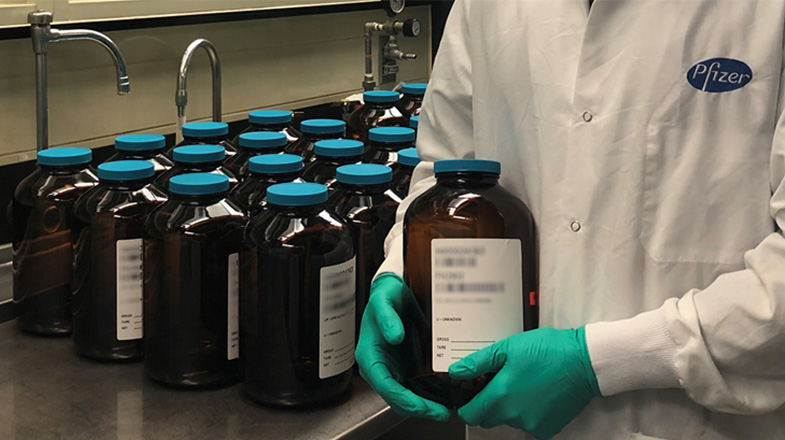- Science
- Clinical Trials
- Guide to Clinical Trials Your participation makes a difference
- Clinical Trials in Children Designed to improve kids' health
- Data and Results Sharing our Results
- Integrity and Transparency Building Trust
- Diversity Equity and Representation
- Plain Language Study Results Trial Result Summaries
- Expanded Access & Compassionate Use Possible Treatment Options
- Find a Trial
- Areas of Focus
- Rare Disease Smaller populations but big impact
- Internal Medicine Extending lifespans worldwide
- Inflammation & Immunology Treatment at the molecular level
- Vaccines Preventing the spread of infections
- Oncology The science of optimism
- Anti Infectives Combatting an evolving risk
- Areas of Innovation
- Gene Therapy Breakthroughs become treatments
- Medicinal Sciences The next generation of science
- Precision Medicine Developing tailored medicines
- Maternal Immunization Protecting newborns at the start
- mRNA Technology Unleashing the next wave of scientific innovations
- Diseases & Conditions
- Coronavirus Resources
- Product Pipeline
- Research Sites
- Clinical Trials
- Products
- How Drugs are Made
- Branded vs. Generic Learn the difference
- Biologics & Biosimilars Cures found in nature
- Commitment to Quality Maintaining the highest standards
- Global Supply Strategic manufacturing locations
- Manufacturing Sites Where medicine is made in the U.S.
- Medicine Safety
- Health Literacy Learning to be well
- Treatment Choices Learning about treatment decisions
- Partnering With Patients Helping others by reporting side effects
- Tips for Patients Preventing medication errors
- Reporting Adverse Events
- Counterfeiting Preventing medication errors
- Safety Data Sheets
- Product List
- Product Contacts
- PfizerPro for Professionals
- Patient Assistance Programs
- Distributors
- How Drugs are Made
- Stories
- Newsroom
- About
- People
- Executives Our senior-most leadership
- Board Members The people steering our company
- Scientists Our experts making discoveries
- Patient Stories Our patients
- Colleague Stories Our colleagues
- Responsibility
- Ethics & Compliance Each of us is responsible
- Diversity, Equity, and Inclusion Everyone has something to offer
- EHS Governance
- Environmental Sustainability Our responsiblity to the environment
- Global Impact Meeting urgent needs worldwide
- Health & Safety
- Human Rights Furthering dignity and worth
- Intellectual Property The benefits of fair competition
- Patient Advocacy & Engagement Putting Patients First
- Misinformation
- Programs & Policies
- Grants Support for independent research
- Political Partnership Supporting like-minded organizations
- Working with Healthcare Professionals Collaboration to improve lives
- Prescription Value & Pricing How to lower patient costs
- Privacy Principles Commitment to personal data privacy
- Ready for Cures Improving Access to Medicines
- Transparency in Grants Committed to Disclosure
- Investors
- Investors Overview Information for stockholders
- Why Invest Why to join us in our mission
- Events & Presentations Calendar of upcoming events
- Financial Reports Quarterly reports and more
- Investor News Announcements about our performance
- Stock Information Charts and data
- Shareholder Services Information on stock transactions
- Corporate Governance
- Corporate Governance Overview Gaining insight into our performance
- Board Committees & Charters Defining the corporate structure
- The Pfizer Board Policies Ensuring ethical leadership
- Corporate Governance FAQs Learn more about our approach
- Contact Our Directors Email any of our Directors
- Purpose
- History
- Careers
- Partners
- People
COVID-19 Explained
Here’s what you need to know about the coronavirus responsible for causing COVID-19
- What is a Coronavirus?
Coronaviruses comprise a large family of viruses, some of which cause respiratory illnesses in humans, ranging from common colds to more severe conditions such as Severe Acute Respiratory Syndrome (SARS) and Middle Eastern Respiratory Syndrome (MERS).1
They derive their name from the fact that under electron microscopic examination, each virion is surrounded by a “corona,” or halo. This is due to the presence of protein spikes emanating from the exterior of the virus.2
A 'novel coronavirus' is a new, previously unidentified strain of coronavirus. The novel coronavirus involved in the outbreak that began in 2019 has been named severe acute respiratory syndrome coronavirus 2 (SARS-CoV-2).3
The disease it causes has been named “coronavirus disease 2019” or “COVID-19.”3
- How Does the Virus Spread?
COVID-19 can spread from person to person usually through close contact with an infected person or through respiratory droplets that are dispersed into the air when an infected person coughs, sneezes, talks, or sings.4
Droplets can land in the mouths or noses of people who may be close by. Spread is more likely when people are within 6 feet of each other.4
Some variants of the virus may spread faster and cause more infections than earlier forms of the virus that causes COVID-19.4
- Where Has COVID-19 Spread to?
As of November 11, 2021, 225 countries and territories reported about 251 million COVID‑19 cases and over 5 million deaths since China reported its first cases to the World Health Organization (WHO) in December of 2019.5
- What Are the Symptoms?
People with COVID-19 may have symptoms that range from mild symptoms to severe illness. Symptoms may appear 2-14 days after exposure to the virus.6
Some may be asymptomatic, but for those who do become symptomatic, the most common symptoms of COVID-19 include:6
- Fever or chills
- Cough
- Shortness of breath or difficulty breathing
- Fatigue
- Muscle or body aches
- Headache
- New loss of taste or smell
- Sore throat
- Congestion or runny nose
- Nausea or vomiting
- Diarrhea
This list does not include all possible symptoms
- How Do You Protect Yourself From Coronavirus?
The best way to protect others and yourself is by getting fully vaccinated and maintaining social distancing and good hygiene.7
Since some infected persons may not yet be exhibiting symptoms or their symptoms may be mild, maintaining a physical distance (2 meters or 6 feet) with those outside your household is a good idea.7
To help prevent getting COVID-19:7
- Wash your hands often with soap and water for at least 20 seconds especially after you have been in a public place, or after blowing your nose, coughing, or sneezing.
- Cover your mouth and nose with a mask or cloth face cover when around others at all times.
- Cover coughs and sneezes with a tissue or use the inside of your elbow.
- Clean and disinfect frequently touched surfaces daily. This includes tables, doorknobs, light switches, countertops, handles, desks, phones, keyboards, toilets, faucets, and sinks.
- Monitor your health daily and follow CDC guidance if symptoms develop.
- What to Do if You Suspect You've Been Infected?
If you have a fever, cough, or other symptoms, you might have COVID-19.
Most people have mild illness and are able to recover at home. If you think you may have been exposed to COVID-19, contact your healthcare provider.
If you are sick, keep track of your symptoms. If you have an emergency warning sign (including trouble breathing), get emergency medical care immediately.8
Clinical Trials
Learn more about the process of joining a clinical trial and find a trial near you.
Sources
1 Human Coronavirus Types. Centers for Disease Control and Prevention. https://www.cdc.gov/coronavirus/types.html.
2 Middle East Respiratory Syndrome (MERS). Centers for Disease Control and Prevention. https://www.cdc.gov/coronavirus/mers/photos.html Accessed 26 Aug. 2021
3 Naming the coronavirus disease (COVID-19) and the virus that causes it. WHO. https://www.who.int/emergencies/diseases/novel-coronavirus-2019/technical-guidance/naming-the-coronavirus-disease-(covid-2019)-and-the-virus-that-causes-it. Accessed October 25. 2021.
4. How COVID-19 Spreads. Centers for Disease Control and Prevention. https://www.cdc.gov/coronavirus/2019-ncov/prevent-getting-sick/how-covid-spreads.html. Accessed October 25, 2021.
5 WHO Coronavirus (COVID-19) Dashboard. WHO. https://covid19.who.int/. Accessed October 25, 2021.
6 Symptoms of COVID-19. The Centers for Disease Control and Prevention. https://www.cdc.gov/coronavirus/2019-ncov/symptoms-testing/symptoms.html. Accessed October 26, 2021.
7 How to Protect Yourself & Others. The Centers for Disease Control and Prevention. https://www.cdc.gov/coronavirus/2019-ncov/prevent-getting-sick/prevention.html. October 26, 2021.
8 What to Do If You Are Sick. The Centers for Disease Control and Prevention. https://www.cdc.gov/coronavirus/2019-ncov/if-you-are-sick/index.html. Accessed October 26, 2021.










